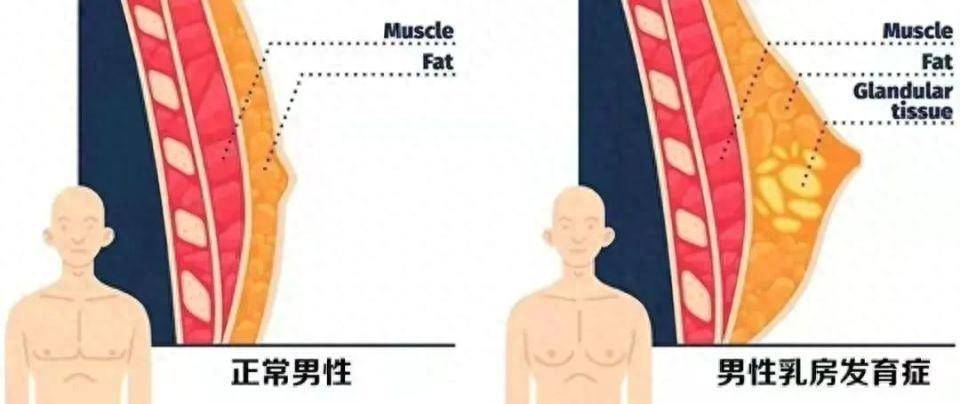A male patient, referred to as Xiao Kai, aged 38, has been troubled by pain and swelling in his left breast for over 10 years. His breast is both swollen and painful, reaching the size of a C cup. He had concealed this secret for years. However, as the pain in his breast intensified, he finally mustered up the courage to seek medical help at the Breast Department outpatient clinic of the Red Cross Hospital in Guangzhou.
After examination, the doctor diagnosed Xiao Kai with “male breast development” and admitted him for treatment. A personalized surgical treatment plan was devised to remove excess breast tissue through a small incision. Following the surgery, Xiao Kai successfully recovered, and his breast pain was effectively resolved, reducing his breast size from a C cup to a normal male chest size.
Why do male breasts also develop?
What is considered abnormal?
What treatment options are available?
Today let’s discuss male breast development issues.
Expert in this article:
Liu Wei, Deputy Chief Physician, Breast Department, Red Cross Hospital, Guangzhou
What is male breast development?
In normal male breast tissue, there are only undeveloped mammary ducts and a small amount of connective tissue. The nipples are small, and the areolas are brown or light brown, appearing flat. If there is abnormal development in the breast, it is referred to as male breast development. Normally, male chest walls do not have palpable breast tissue. When breast tissue is palpable behind the nipple-areola complex or the breast resembles female breasts, it is considered male breast development.
Male breast development is the most common disease in male breasts, with an incidence rate of 32% to 65%, which can occur unilaterally or bilaterally, diffuse or localized, with bilateral diffuse being the most common. Male breast development can occur at any age, commonly in infants, adolescents, and middle-aged or elderly individuals.
There are three types of male breast development:
Based on the proportion of internal breast tissue, it can be classified as glandular type, fatty type, or glandular-fatty mixed type.
Based on breast morphology and size, it can be classified as Grade I (mild), Grade II (moderate), Grade III (severe), or Grade IV (extremely severe).
Based on the etiology, it can be classified as physiological, pathological, drug-induced, or idiopathic. Physiological male breast development may regress naturally, while pathological and drug-induced causes may partially regress upon removal of the trigger, and some idiopathic cases may also regress naturally, but some may become irreversible conditions.
Is surgical treatment necessary?
Surgical treatment is an effective method to cure this condition. The purpose of surgery is to restore a normal male chest, relieve the patient’s psychological burden, and restore the patient’s confidence. However, not all male breast development patients require surgical treatment. Surgery is only considered in the following circumstances:
Male breast development patients classified as Grade II to Grade IV (moderate to extremely severe) with a strong desire for surgery from the patient, family, or guardian;
Male breast development combined with breast tumors;
Grade I (mild) male breast development affecting the patient’s work and life due to psychological burden, with a strong desire for surgery from the patient, family, or guardian;
Adolescents whose lives and studies are impacted by male breast development, ineffective psychological guidance, with a strong desire for surgery from the individual and guardian;
Suspected malignancy.
Once male friends notice abnormal breast changes,
please seek medical attention promptly at a regular healthcare institution.
Source: Red Cross Hospital, Guangzhou


